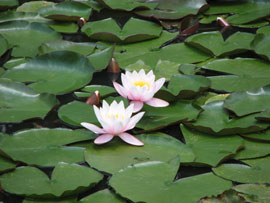
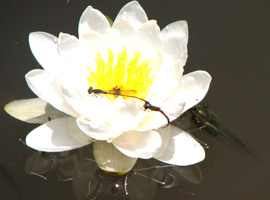
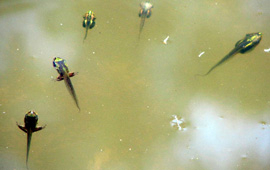
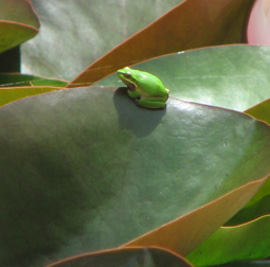
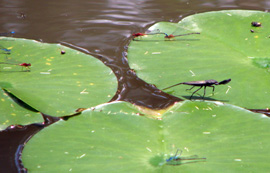
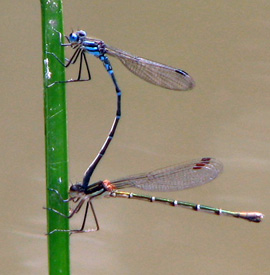 On my small dam the waterlilies are blooming, their large circular leaves so abundant that they are overlapping, curling up at their edges.
On my small dam the waterlilies are blooming, their large circular leaves so abundant that they are overlapping, curling up at their edges.
There are two green floating islands of them, one bearing pale pink lotus-like cups, the other such a pale lemon as to seem white.
Since these aquatic plants had all but disappeared in the drought, I went down to have a closer look at their new burst of life.
Life indeed, for the waterlily rafts are hosting a multitude of fauna.
Two tiny tortoises slipped back into the water as I approached.
The dozens of tadpoles apparently hanging from the water surface soon proved to be hundreds, of several types, and all fat and healthy.
Some of the smaller ones already had legs sprouting from their translucent brown sides.
In the middle of the lily pads I spotted a tiny jewel of a green frog.
‘Water boatmen’ rowed their skinny insect selves across the surface.
Delicate blue and red jointed sticks with gauze wings perched rigidly solo, or curved in what I presumed to be copulating pairs, on lily leaves and reed stems — mayflies, dragonflies?
Beetles and other strange insects busied themselves on the pads.
I came home to refer to my old pond life book, to be able to tell you with authority what these dam inhabitants are, but like so many other books — I must have lent it out long ago and forgotten to whom.
So nameless but beautiful they remain.

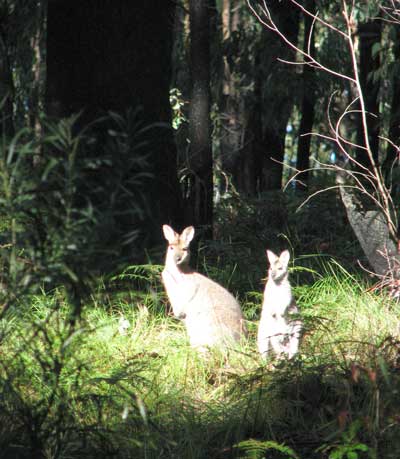
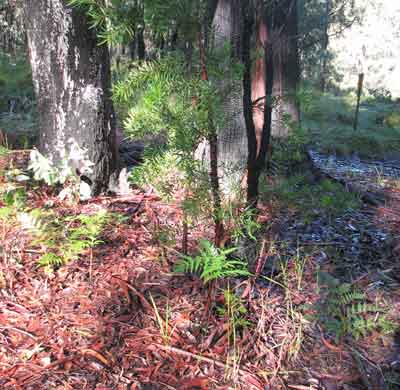
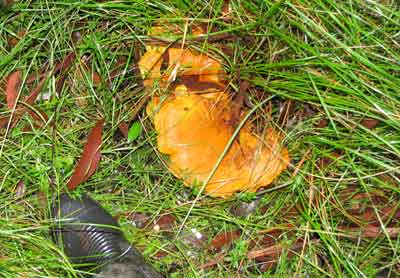
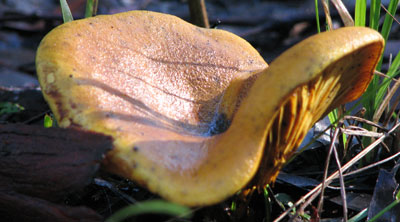
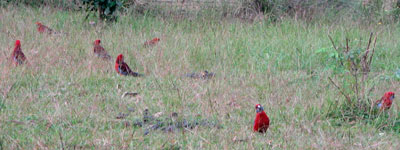
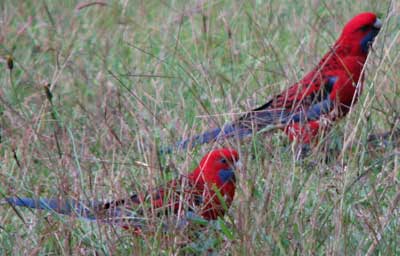
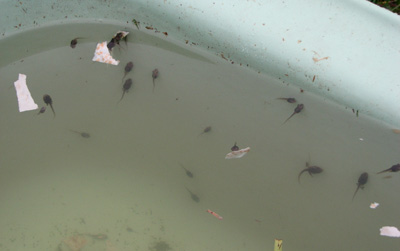
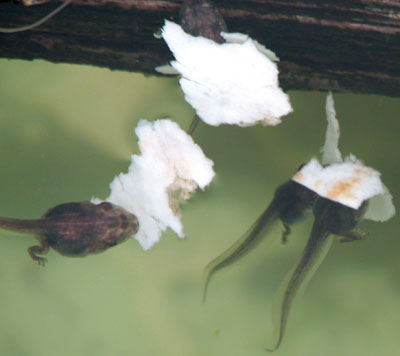
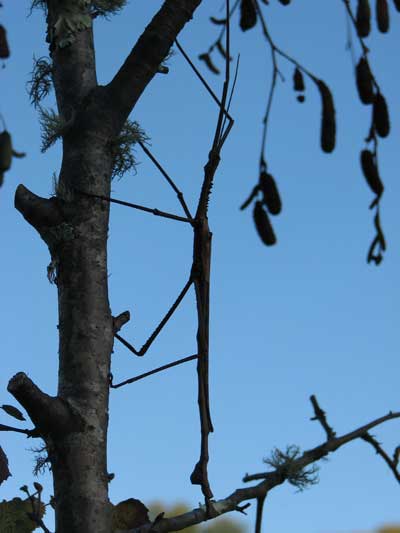
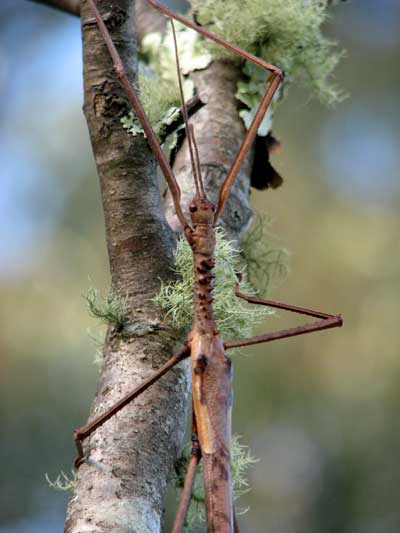

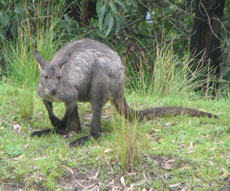 Apart from the many Eastern red-necked wallabies, I share my place with small groups of other hoppy marsupials.
Apart from the many Eastern red-necked wallabies, I share my place with small groups of other hoppy marsupials.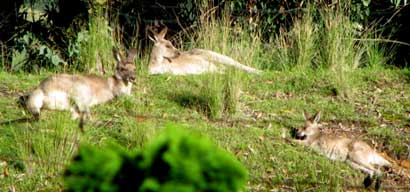
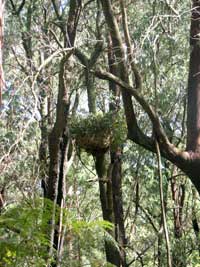 As you might expect, given that I live in forest country, I love trees.
As you might expect, given that I live in forest country, I love trees.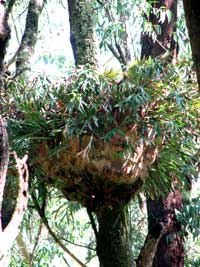
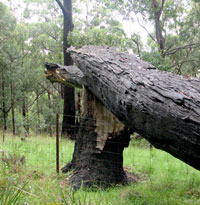 Even when a tree is totally destroyed, its trunk broken off and laid low, taken from skydweller to ground hugger, it takes on new life as host. Like this mighty ancient, which blocked the track for some time until a big enough chainsaw came along.
Even when a tree is totally destroyed, its trunk broken off and laid low, taken from skydweller to ground hugger, it takes on new life as host. Like this mighty ancient, which blocked the track for some time until a big enough chainsaw came along.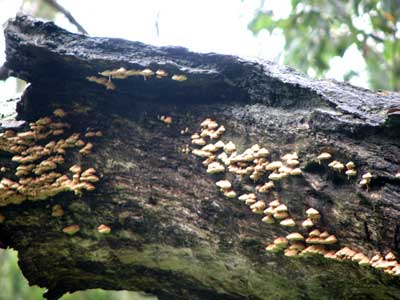
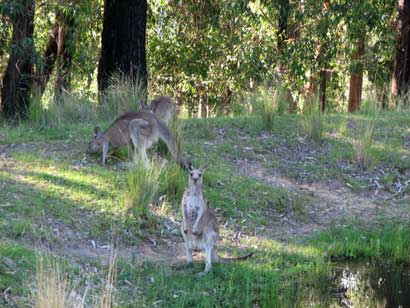
 When I feed the horses I have to tie them up so the greedy ones don’t annoy the others.
When I feed the horses I have to tie them up so the greedy ones don’t annoy the others.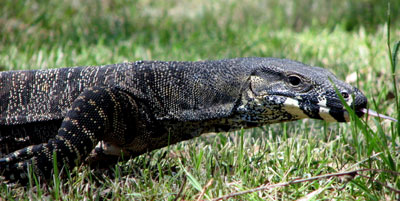
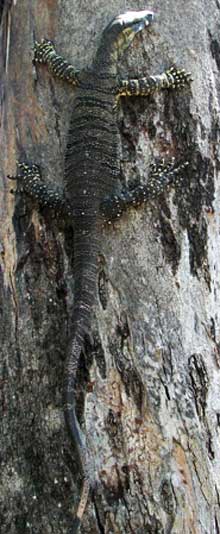 On a recent Goulburn River camping trip, one visitor to the campsite was familiar: a large, long goanna, or Lace Monitor.
On a recent Goulburn River camping trip, one visitor to the campsite was familiar: a large, long goanna, or Lace Monitor.





 On my small dam the waterlilies are blooming, their large circular leaves so abundant that they are overlapping, curling up at their edges.
On my small dam the waterlilies are blooming, their large circular leaves so abundant that they are overlapping, curling up at their edges.